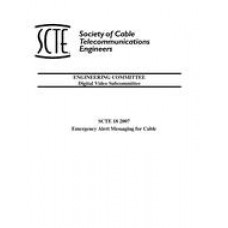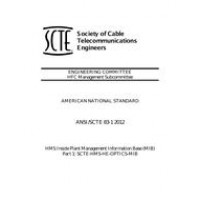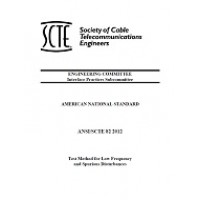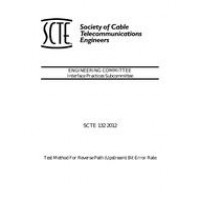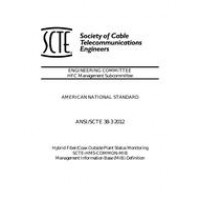SCTE 18 2002 (R2007)
- Emergency Alert Message for Cable, approved as a joint standard with CEA as ANSI-J-STD-042-2002, (formerly DVS 208)
- standard by Society of Cable Telecommunication Engineers, 01/01/
- Category: SCTE
$50.00
$25.00
The EA signaling scheme defined in this standard allows a cable operator to disseminate emergency alert information related to state and local-level emergencies and warnings in a cost-effective and efficient way, while minimizing disruption to programming. While it is possible for a cable operator to comply with EAS requirements by simply replacing the source signal for all programs with an emergency information channel, such switching is disruptive to viewing, is overly intrusive for many kinds of local warnings and is expensive and complex for the cable operator to implement in a digital cable environment where each transport stream may carry many programs that would have to be individually interrupted. To handle the rare case of a national-level EAS event, the EA message instructs a terminal device to force-tune to a designated emergency broadcast channel.
Section 4 of this standard defines the syntax of the emergency alert message and related descriptors. This message is in the form of a standard MPEG-2 table and may be in-band on all cable transport streams that carry one or more programs in-the-clear, as necessary. Terminal devices without Point Of Deployment (POD) modules in place will process such messages as described in Sections 4 and 5 of this standard. For programs that are scrambled on a cable system, the emergency alert message will be delivered to the POD module using the cable system's forward data channel. The POD module will process the message as necessary and deliver it to the terminal device out-of-band. As used in this document, "out-of-band" refers to the Extended Channel interface defined in DVS 131r7 as modified and extended by DVS 216r3. As delivered to the terminal device by the POD module the emergency alert message will be an MPEG-2 table as defined in Section 4 of this standard. The terminal device will then process the message in accordance with Section 5 of this standard.
 PDF
PDF
All of our standards document are available in PDF (Portable Document Format), an electronic, downloadable format.You will be able to download the file in your account downloads.
 Multi-User Access
Multi-User Access
After purchasing, you have the ability to assign each license to a specific user.
 Printable
Printable
At any time, you are permitted to make printed copies for your and your members' reference use.

